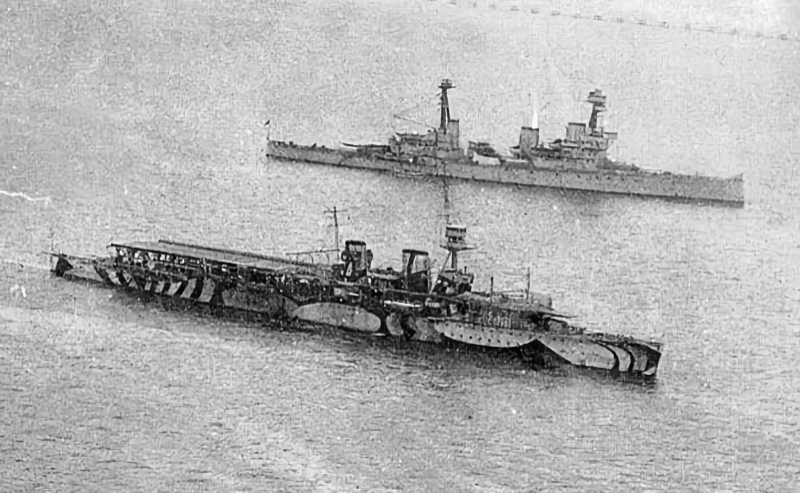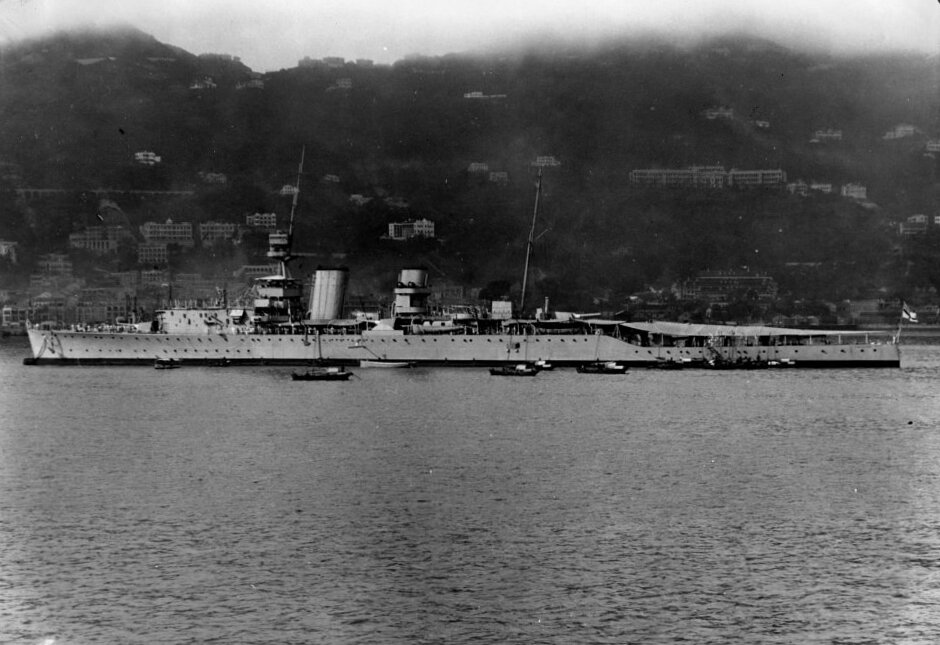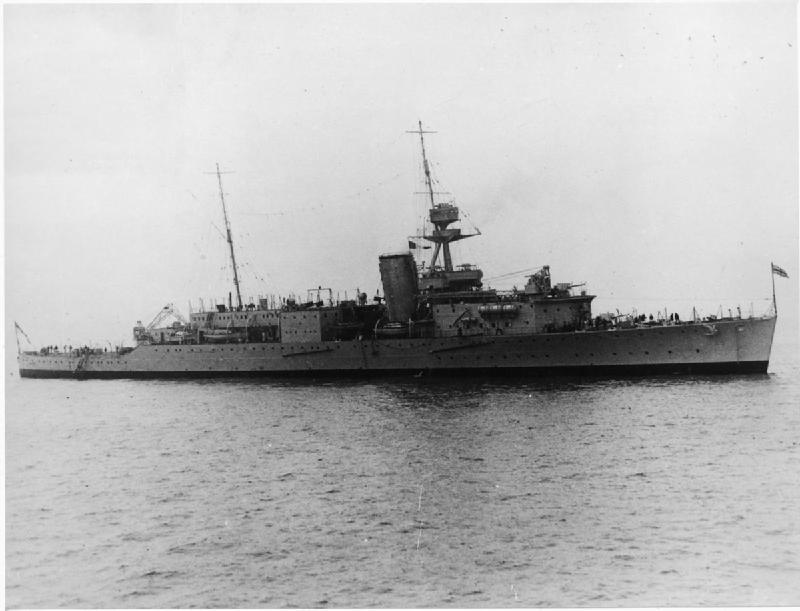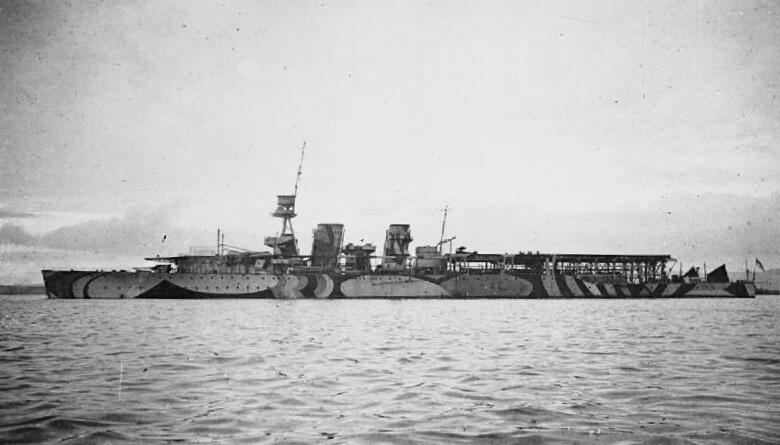British Heavy Cruiser HMS Vindictive
HMS Vindictive was originally laid down as HMS Cavendish, one of the Hawkins-class heavy cruisers ordered during the First World War. Before completion she was selected for conversion into an aircraft carrier, reflecting the Admiralty’s growing interest in naval aviation. Renamed Vindictive in June 1917, she was launched in January 1918 and completed in October that year, just weeks before the Armistice. Her design was experimental, with a flying-off deck forward, a hangar amidships, and a landing deck aft, though the latter was obstructed by her funnels and superstructure. These limitations made her an unsatisfactory carrier, capable of operating only light aircraft with difficulty.
In 1919 Vindictive participated in the British campaign in the Baltic during the Russian Civil War. Serving as an aircraft carrier, she supported operations against the Bolsheviks in aid of the White Russian forces. Her aircraft were employed for reconnaissance, patrols, and occasional strikes on shore targets.
After returning from the Baltic she was used briefly as a training and trials carrier before being placed in dockyard hands in 1923. Between 1923 and 1925 she was rebuilt as a conventional cruiser, armed like her Hawkins-class sisters with seven 7.5-inch guns. In this guise she served overseas, particularly in the Mediterranean and East Indies, fulfilling the trade protection and imperial duties for which the class had been designed. In 1936 she was converted into a training ship, her main armament reduced and accommodation provided for cadets, inline with the Washintong Treaties’ limit of 15 heavy cruisers for the Royal Navy.
At the outbreak of the Second World War, Vindictive was converted once more, this time into a repair ship. Her heavy armament was removed and extensive workshops and stores were installed, enabling her to service warships in forward areas. In this role she supported the fleet throughout the war, a vital but often overlooked contribution. During the Normandy landings in 1944 she was torpedoed by German forces while off the invasion beaches.
Vindictive was finally paid off in 1945 and scrapped at Blyth in 1946.
Specifications – HMS Vindictive (as converted cruiser, 1925)
- Class & type: Hawkins-class heavy cruiser (originally completed as aircraft carrier, reconverted as cruiser, later repair ship)
- Displacement: standard ~9,750 tons; full load ~12,190 tons
- Length: 605 ft (184 m)
- Beam: 65 ft (19.8 m)
- Draught: 19 ft (5.8 m)
- Propulsion: 4 shafts, steam turbines, 12 Yarrow boilers, 60,000 shp
- Speed: 30 knots (56 km/h; 35 mph)
- Range: 5,400 nmi at 14 knots
- Complement: ~700 officers and men (varied after later conversions)
Armament (as cruiser, 1925):
- 7 × 7.5-inch (190 mm) guns (single mounts)
- 6 × 3-inch (76 mm) AA guns
- 2 × 2-pounder (40 mm) AA guns
- 6 × 21-inch (533 mm) torpedo tubes
Armament (as training ship and repair ship):
- Heavy armament removed or reduced
- Light AA guns fitted during the Second World War
Armour:
- Belt: 1.5–3 in (38–76 mm)
- Deck: up to 1.5 in (38 mm)



















